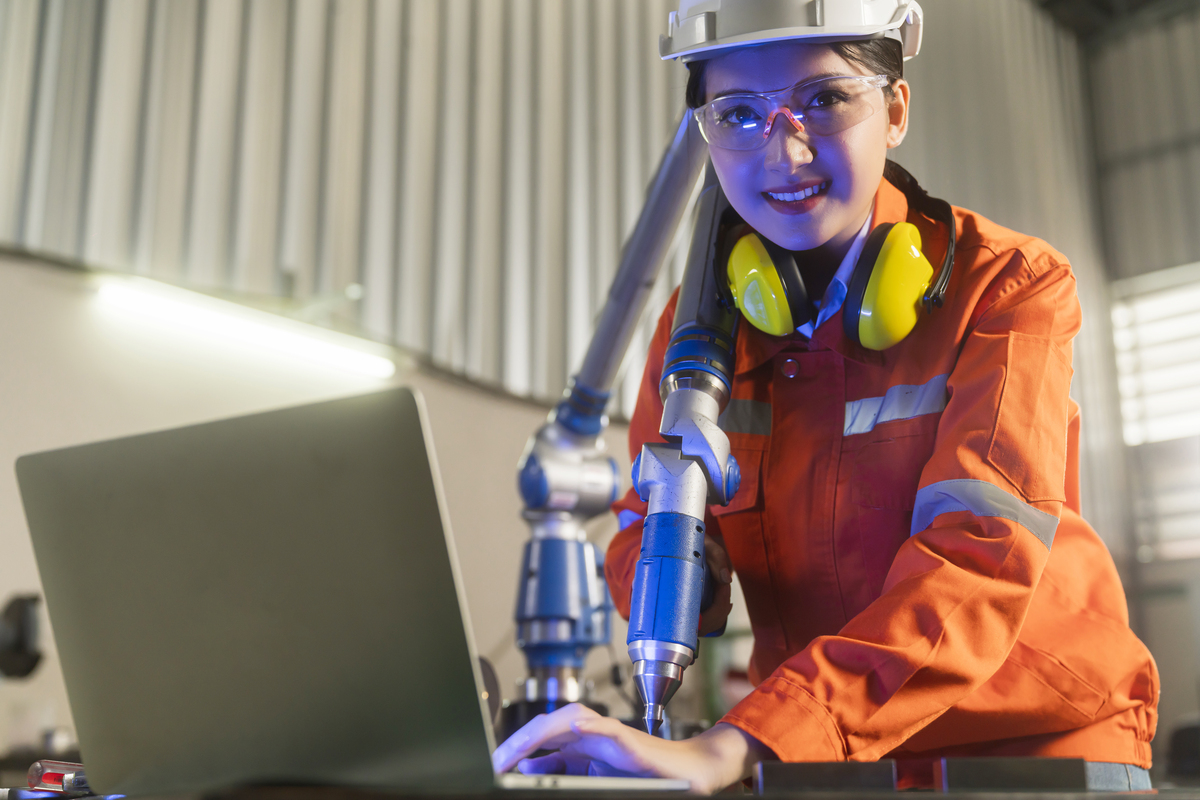In the landscape of computing, DNA computing emerges as a groundbreaking frontier, poised to revolutionize how we approach computational tasks and solve complex problems. Harnessing the remarkable properties of DNA molecules, DNA computing offers a glimpse into a future where computation is not only powerful but also inherently scalable, parallel, and biocompatible.
Statistics paint a compelling picture of the potential impact of DNA computing. According to recent estimates, the global DNA data storage market is projected to reach $749 million by 2025, reflecting a compound annual growth rate (CAGR) of 22.3% from 2020 to 2025. Additionally, the exponential growth of genetic data, with genomic data doubling approximately every seven months, underscores the pressing need for innovative computing solutions to manage and analyze this wealth of information.
Against this backdrop, understanding the principles, applications, and challenges of DNA computing becomes increasingly imperative. From cryptography and optimization to biomedical diagnostics and environmental monitoring, it holds promise across diverse fields. However, ethical considerations surrounding genetic privacy, data security, and societal implications loom large, necessitating thoughtful discourse and ethical governance.
In this comprehensive exploration, we delve into the intricacies of DNA computing, examining its principles, applications, challenges, and future prospects. By unraveling the mysteries of it, we aim to shed light on its transformative potential and pave the way for responsible innovation in the digital age.
Table of Contents
Understanding DNA Computing
DNA computing, also known as biomolecular computing, is a cutting-edge interdisciplinary field that harnesses the unique properties of DNA molecules for computational purposes. At its core, it relies on the inherent ability of DNA to store and process vast amounts of information in parallel, offering a potential alternative to traditional silicon-based computing systems.
Principles of DNA Computing
At the heart of DNA computing lies the remarkable ability of DNA molecules to store information in the form of sequences of nucleotides—adenine (A), thymine (T), cytosine (C), and guanine (G). These nucleotides can be arranged in specific sequences, analogous to the binary code used in digital computing. However, DNA offers a much denser storage medium, capable of storing immense amounts of data in a tiny volume.
DNA Manipulation Techniques
DNA computing involves manipulating DNA molecules in controlled environments to perform computational tasks. Techniques such as polymerase chain reaction (PCR), gel electrophoresis, and DNA sequencing are commonly employed to manipulate and analyze DNA sequences. Additionally, advancements in synthetic biology have enabled researchers to design custom DNA sequences with desired properties, further expanding the capabilities of its systems.
DNA Computing Algorithms
In DNA computing, algorithms are designed to exploit the unique properties of DNA molecules for solving computational problems. These algorithms often leverage principles of molecular biology and biochemistry to encode and process information using DNA sequences. For example, DNA strands can be used to represent data, and molecular operations such as DNA strand displacement and hybridization can be employed to perform logical and arithmetic operations.
Parallelism and Massive Parallelism
One of the most significant advantages of DNA computing is its inherent parallelism. Unlike traditional computers, which process information sequentially, its systems can perform operations in parallel, allowing for the simultaneous execution of a vast number of computational tasks. This massive parallelism enables DNA computing to tackle complex problems more efficiently and quickly than conventional computing systems.
Advantages of DNA Computing
DNA computing offers several advantages over traditional silicon-based computing systems. These include:
- Massive Storage Capacity: DNA molecules can store immense amounts of data in a compact form, offering unparalleled storage density.
- Parallel Processing: DNA computing systems can execute computations in parallel, leading to faster processing speeds and improved efficiency.
- Biocompatibility: DNA is a naturally occurring biomolecule, making DNA computing systems potentially compatible with biological systems and environments.
- Low Energy Consumption: DNA computing operates at the molecular scale, requiring minimal energy compared to conventional electronic computing systems.
Understanding DNA computing is essential for unlocking its full potential as a revolutionary computing paradigm. By harnessing the unique properties of DNA molecules, researchers are poised to develop innovative solutions to complex computational problems across diverse domains, ranging from cryptography and optimization to medical diagnostics and drug discovery. As research in this field continues to advance, it holds the promise of revolutionizing the way we process information and solve problems in the digital age.
Suggested article to read: quantum computing

History of DNA Computing
The history of DNA computing traces back to the groundbreaking work of Leonard Adleman in the early 1990s. Adleman, a computer scientist at the University of Southern California, proposed the concept of using DNA molecules as a substrate for solving computational problems. His seminal paper, “Molecular Computation of Solutions to Combinatorial Problems,” was published in the journal Science in 1994.
Early Milestones
- 1994: Leonard Adleman demonstrates the feasibility of DNA computing by solving a variant of the Hamiltonian path problem—a classic problem in graph theory—using DNA molecules in a test tube. This proof-of-concept experiment establishes the potential of DNA as a computational substrate.
- 1997: Adleman and his team at USC successfully solve a small instance of the traveling salesman problem—a well-known optimization problem—using DNA computing techniques. This achievement further showcases the computational power of DNA molecules.
Expansion and Exploration
Following Adleman’s pioneering work, researchers around the world begin exploring the possibilities of DNA computing across various domains. Key developments include:
- Diverse Applications: Researchers explore the application of DNA computing to a wide range of problems, including cryptography, optimization, pattern recognition, and molecular-scale robotics.
- Algorithmic Advances: New algorithms and methodologies are developed to exploit the unique properties of DNA molecules for solving computational problems. Techniques such as DNA strand displacement, DNA tile assembly, and molecular self-assembly become integral to DNA computing research.
- Experimental Advances: Advancements in molecular biology and biochemistry lead to improved techniques for manipulating and analyzing DNA molecules. These advancements enable researchers to perform increasingly complex DNA computing experiments with higher accuracy and efficiency.
Challenges and Limitations
Despite its potential, DNA computing faces several challenges and limitations:
- Scalability: Scaling up DNA computing systems to handle large-scale problems remains a significant challenge due to limitations in synthesis and manipulation techniques.
- Error Rates: DNA computing systems are prone to errors caused by factors such as DNA degradation, non-specific binding, and thermal fluctuations. Minimizing error rates is crucial for the reliability of DNA-based computations.
- Cost and Complexity: DNA synthesis and manipulation techniques can be costly and complex, limiting the accessibility of DNA computing technology to researchers outside specialized laboratories.
Current Research and Future Prospects
In recent years, research in DNA computing has continued to advance, fueled by interdisciplinary collaborations and technological innovations. Key areas of focus include:
- Biological and Medical Applications: Researchers are exploring the potential of DNA computing for applications in healthcare, such as DNA-based diagnostics, drug discovery, and targeted therapy.
- Hybrid Approaches: Hybrid computing approaches that combine DNA computing with traditional silicon-based computing systems are being investigated to leverage the strengths of both technologies.
- Biosecurity and Ethics: Ethical considerations surrounding DNA computing, such as the responsible use of genetic data and the potential for bioterrorism, are becoming increasingly important topics of discussion.
As research in DNA computing progresses, it holds the promise of revolutionizing computing paradigms and addressing some of the most pressing challenges in science and technology. With continued innovation and collaboration, it is poised to make significant contributions to fields ranging from information technology to biomedicine in the years to come.
Suggested article to read: AI for Construction Vehicle Automation: Neural Networks and Machine Learning Approaches
Principles of DNA Computing
The principles of DNA computing revolve around leveraging the unique properties of DNA molecules for computational purposes. Here’s an overview of the key principles:
1. DNA as Information Storage
DNA molecules serve as a highly efficient and dense storage medium for information. The four nucleotides—adenine (A), thymine (T), cytosine (C), and guanine (G)—can be arranged in sequences to encode digital information. Each nucleotide acts as a “bit” in the binary code, allowing DNA to represent and store vast amounts of data in a compact form.
2. Molecular Operations
DNA computing algorithms leverage molecular operations to perform computational tasks. These operations include DNA strand displacement, DNA hybridization, and DNA ligation, among others. By manipulating DNA molecules in controlled environments, researchers can perform logical and arithmetic operations analogous to those performed by traditional electronic computers.
3. Parallelism
One of the most significant advantages of DNA computing is its inherent parallelism. Unlike traditional computers, which process information sequentially, its systems can execute operations in parallel. This parallelism arises from the massive parallelism inherent in biochemical processes, allowing DNA computers to tackle complex problems more efficiently and quickly.
4. DNA Computing Algorithms
DNA computing algorithms are designed to exploit the unique properties of DNA molecules for solving computational problems. These algorithms often draw inspiration from molecular biology and biochemistry, incorporating concepts such as DNA sequence design, DNA manipulation techniques, and molecular self-assembly. DNA computing algorithms aim to encode computational tasks into sequences of DNA molecules and execute them using biochemical reactions.
5. Adleman’s Experiment
The pioneering experiment by Leonard Adleman in 1994 demonstrated the feasibility of DNA computing. Adleman solved a variant of the Hamiltonian path problem—a classic problem in graph theory—using DNA molecules in a test tube. This proof-of-concept experiment showcased the potential of DNA as a computational substrate and laid the foundation for subsequent research in the field.
6. Error Correction and Redundancy
DNA computing systems incorporate error correction mechanisms to mitigate errors arising from factors such as DNA degradation, non-specific binding, and thermal fluctuations. Redundancy techniques, such as encoding information in multiple DNA strands and performing redundant operations, help improve the reliability and accuracy of DNA-based computations.
7. Hybrid Approaches
Hybrid approaches that combine DNA computing with traditional silicon-based computing systems are being explored to leverage the strengths of both technologies. These hybrid systems integrate DNA-based storage and processing capabilities with electronic components, offering enhanced performance and scalability for certain applications.
8. Scalability and Complexity
Scalability and complexity are key considerations in DNA computing. While DNA molecules offer immense storage capacity and parallelism, scaling up its systems to handle large-scale problems remains a challenge. Addressing issues such as synthesis cost, manipulation techniques, and error rates is crucial for advancing the scalability and complexity of DNA computing technology.
By understanding and harnessing these principles, researchers aim to unlock the full potential of it and develop innovative solutions to complex computational problems across diverse domains.
Suggested article to read: AI in Project Management; Ultimate Guide 2024

Applications of DNA Computing
DNA computing has a wide range of potential applications across various fields due to its unique properties and capabilities. Here are some notable applications:
1. Cryptography
DNA computing offers a promising approach for cryptographic applications, including encryption, decryption, and secure communication. DNA molecules can be used to encode and decode information, providing a novel way to implement cryptographic algorithms. DNA-based encryption methods offer potential advantages in terms of security and data protection.
2. Optimization Problems
DNA computing has demonstrated potential for solving optimization problems in various domains, such as logistics, scheduling, and resource allocation. By leveraging the parallelism and massive storage capacity of DNA molecules, researchers can tackle complex optimization problems more efficiently than traditional computing approaches.
Suggested article to read: Building Energy Optimization; Comprehensive Guide 2024
3. Data Storage
DNA molecules serve as a dense and stable storage medium for digital data. DNA-based data storage systems have the potential to store vast amounts of information in a compact form, offering long-term archival solutions for large datasets. DNA storage technologies could revolutionize data storage and archival practices in fields such as genomics, digital libraries, and archival sciences.
4. Molecular Computing
DNA computing enables the development of molecular-scale computing devices and circuits. These molecular computers could perform tasks such as data processing, sensing, and control at the nanoscale level. Molecular computing holds promise for applications in nanotechnology, biomedical engineering, and molecular robotics.
5. Biomedical Diagnostics
DNA computing techniques can be applied to develop advanced diagnostic tools for biomedical applications. DNA-based sensors and biosensors can detect specific biomolecules, pathogens, or genetic mutations with high sensitivity and specificity. DNA computing has potential applications in medical diagnostics, disease detection, and personalized medicine.
6. Drug Discovery
DNA computing can accelerate the process of drug discovery and development by simulating molecular interactions and predicting drug-target interactions. DNA-based algorithms can analyze complex biological data, identify potential drug candidates, and optimize drug design parameters. It holds promise for advancing drug discovery efforts and addressing unmet medical needs.
7. Nanotechnology in Construction
DNA nanotechnology exploits the programmability and self-assembly properties of DNA molecules to fabricate nanoscale structures and devices. DNA-based nanomaterials can be used for applications such as drug delivery, molecular sensing, and nanoelectronics. DNA computing techniques play a crucial role in designing and engineering functional DNA nanostructures for diverse nanotechnology applications.
8. Environmental Monitoring
DNA computing can be employed for environmental monitoring and remediation applications. DNA-based sensors can detect pollutants, toxins, and environmental contaminants with high specificity and sensitivity. Its techniques enable the development of robust and portable environmental monitoring devices for real-time detection and analysis of environmental threats.
By harnessing the power of DNA computing, researchers can develop innovative solutions to address complex challenges in diverse fields, ranging from cybersecurity and optimization to biomedicine and environmental science. As its technologies continue to advance, their impact on society and technology is expected to grow significantly.
Suggested article to read: Construction Monitoring Solutions: Your Complete Guide

Challenges and Limitations
Despite its immense potential, DNA computing also faces several challenges and limitations that need to be addressed for its widespread adoption and practical implementation. Here are some of the key challenges and limitations:
1. Scalability
Scaling up DNA computing systems to handle large-scale problems remains a significant challenge. Current DNA synthesis and manipulation techniques are limited in their capacity to produce and manipulate large quantities of DNA molecules efficiently. Addressing scalability issues is crucial for expanding the capabilities of its and realizing its full potential.
2. Error Rates
DNA computing systems are prone to errors caused by various factors, including DNA degradation, non-specific binding, and thermal fluctuations. These errors can lead to inaccuracies in computational results and affect the reliability of DNA-based computations. Developing error correction mechanisms and minimizing error rates are essential for improving the robustness and accuracy of its systems.
3. Cost and Complexity
DNA synthesis and manipulation techniques can be costly and complex, requiring specialized equipment and expertise. The high cost of DNA synthesis and sequencing limits the accessibility of DNA computing technology to researchers outside specialized laboratories. Finding cost-effective and scalable approaches for DNA synthesis and manipulation is essential for making it more widely available.
4. Experimental Constraints
Performing experiments in DNA computing often requires controlled laboratory conditions and specialized equipment. Experimental constraints such as temperature, pH, and reaction kinetics can impact the performance and reproducibility of DNA-based computations. Overcoming experimental constraints and standardizing experimental protocols are critical for advancing research.
5. Biological Compatibility
Integrating DNA computing systems with biological systems and environments poses challenges in terms of biological compatibility and safety. DNA molecules may interact with biological components and pathways, leading to unintended effects or interference. Ensuring the biological compatibility and safety of DNA computing technologies is essential for their application in biomedical and environmental contexts.
6. Ethical and Societal Implications
DNA computing raises ethical considerations regarding the responsible use of genetic data, privacy concerns, and potential societal impacts. Issues such as genetic privacy, data security, and the misuse of DNA information need to be addressed to ensure the ethical and responsible development of DNA computing technologies. Engaging stakeholders and addressing public concerns are essential for building trust and acceptance of it.
7. Regulatory and Legal Frameworks
The regulatory landscape surrounding DNA computing is still evolving, with limited guidelines and standards in place. Establishing regulatory frameworks for its technologies is necessary to ensure their safe and responsible use. Addressing legal and regulatory challenges, such as intellectual property rights and data protection, is essential for fostering innovation and investment in DNA computing.
8. Interdisciplinary Collaboration
DNA computing requires interdisciplinary collaboration between researchers from fields such as molecular biology, computer science, chemistry, and engineering. Bridging the gap between different disciplines and fostering collaboration is essential for advancing research in DNA computing and addressing complex challenges effectively.
Despite these challenges and limitations, ongoing research and innovation continue to push the boundaries of what is possible. By addressing these challenges collaboratively, researchers can overcome barriers and unlock the full potential of DNA computing for solving complex problems in diverse domains.
Suggested article to read: Artificial Intelligence or AI in Building; Guide to 2024

Future Prospects
The future of DNA computing holds immense promise for revolutionizing computing paradigms and addressing some of the most pressing challenges in science, technology, and society. Here are some future prospects for it:
1. Advancements in Scalability
Future research efforts will focus on overcoming scalability limitations in DNA computing systems. Innovations in DNA synthesis, manipulation techniques, and high-throughput screening methods will enable the production and processing of large quantities of DNA molecules efficiently. Scalable its platforms will unlock new possibilities for tackling complex problems in diverse domains.
2. Enhanced Error Correction
Developing robust error correction mechanisms will be crucial for improving the reliability and accuracy of DNA computing systems. Future advancements in error correction algorithms and techniques will mitigate errors caused by DNA degradation, non-specific binding, and environmental fluctuations. Enhanced error correction capabilities will increase the reliability of DNA-based computations and expand their practical applications.
3. Integration with Biotechnology
DNA computing will increasingly intersect with biotechnology, leading to synergistic advancements in both fields. Integrating it with biotechnological processes, such as gene editing, synthetic biology, and biomolecular engineering, will enable innovative applications in healthcare, agriculture, and environmental sustainability. Its technologies will play a vital role in driving advancements in personalized medicine, bioinformatics, and precision agriculture.
4. Hybrid Computing Architectures
Hybrid computing architectures that combine DNA computing with traditional silicon-based computing systems will become more prevalent. These hybrid systems will leverage the strengths of both technologies, offering enhanced performance, scalability, and energy efficiency. Hybrid DNA-electronic computing architectures will enable novel applications in areas such as artificial intelligence, big data analytics, and Internet of Things (IoT) devices.
5. Biocompatible Devices and Sensors
DNA computing will lead to the development of biocompatible computing devices and sensors for biomedical and environmental applications. DNA-based sensors and biosensors will detect biomolecules, pathogens, and environmental contaminants with high sensitivity and specificity. Biocompatible its devices will enable real-time monitoring, diagnosis, and treatment of diseases, as well as environmental monitoring and remediation.
6. Ethical and Societal Considerations
Addressing ethical and societal considerations will be essential for the responsible development and deployment of DNA computing technologies. Stakeholder engagement, public awareness, and regulatory frameworks will play a crucial role in ensuring the ethical use of genetic data, protecting privacy rights, and addressing potential societal impacts. Ethical guidelines and standards will guide the ethical conduct of research and innovation in it.
7. Education and Workforce Development
Education and workforce development initiatives will foster interdisciplinary collaboration and talent development in DNA computing. Training programs, academic courses, and research collaborations will cultivate a diverse workforce with expertise in molecular biology, computer science, chemistry, and engineering. Building a skilled workforce will drive innovation and accelerate the translation of its research into practical applications.
As DNA computing continues to evolve and mature, its transformative impact on science, technology, and society will become increasingly evident. By addressing technical challenges, fostering interdisciplinary collaboration, and embracing ethical principles, researchers can harness the full potential of it to address complex problems and improve the human condition.
Suggested article to read: Artificial Intelligence or AI in Construction Industry; Guide to 2024

Ethical and Societal Implications
Ethical and societal implications surrounding DNA computing are multifaceted and require careful consideration to ensure responsible development and deployment. Here are some of the key ethical and societal implications associated with it:
1. Genetic Privacy and Data Security
DNA computing involves the manipulation and analysis of genetic data, raising concerns about genetic privacy and data security. Safeguarding genetic information from unauthorized access, misuse, and discrimination is crucial to protect individual privacy rights and maintain public trust. Robust encryption, secure storage protocols, and strict access controls are necessary to mitigate privacy and security risks associated with its technologies.
2. Informed Consent and Data Ownership
Collecting and using genetic data for DNA computing applications necessitate informed consent and clear guidelines for data ownership and usage. Individuals should have the right to control their genetic information and make informed decisions about its use in research and commercial applications. Establishing transparent consent processes, data sharing agreements, and ethical guidelines will ensure respect for individual autonomy and rights.
3. Genetic Discrimination and Stigmatization
The use of genetic data in DNA computing may lead to genetic discrimination and stigmatization, particularly in employment, insurance, and healthcare settings. Discriminatory practices based on genetic information can exacerbate inequalities and harm vulnerable populations. Implementing legal protections, anti-discrimination policies, and public education initiatives can mitigate the risks of genetic discrimination and promote equity and justice.
4. Biases and Representation
Biases and representational issues in genetic data collection and analysis can perpetuate inequalities and disparities in DNA computing applications. Biases in genetic databases, sample populations, and algorithms may disproportionately affect certain demographic groups and undermine the accuracy and fairness of computational outcomes. Addressing biases and promoting diversity and inclusivity in genetic research and analysis are essential for ensuring equity and social justice in it.
5. Dual-Use Concerns
DNA computing technologies have dual-use potential, meaning they can be used for both beneficial and harmful purposes. The misuse of it for malicious activities, such as bioterrorism, genetic engineering, or surveillance, poses significant ethical and security risks. Developing safeguards, oversight mechanisms, and international collaborations to prevent misuse and promote responsible innovation are critical for mitigating dual-use concerns associated with it.
6. Environmental and Ecological Impacts
The environmental and ecological impacts of DNA computing, including the production and disposal of DNA molecules and associated materials, should be carefully considered. Minimizing the environmental footprint of its processes, adopting sustainable practices, and conducting lifecycle assessments are essential for reducing environmental risks and promoting environmental stewardship.
7. Public Engagement and Trust
Engaging stakeholders, including policymakers, researchers, industry stakeholders, and the general public, is essential for fostering trust, transparency, and accountability in DNA computing. Building public awareness, facilitating meaningful dialogue, and soliciting input from diverse perspectives will enhance the ethical governance and societal acceptance of its technologies.
By addressing these ethical and societal implications proactively and collaboratively, researchers, policymakers, and stakeholders can ensure that its technologies are developed and deployed responsibly, ethically, and in the best interest of society.
Suggested article to read: What is AI Twin & How it can be effective in Automated Construction? (2024)
Conclusion
In conclusion, DNA computing stands at the forefront of technological innovation, offering a paradigm-shifting approach to computational problem-solving. With its ability to store vast amounts of data, execute operations in parallel, and interface with biological systems, DNA computing holds tremendous promise for addressing complex challenges across diverse domains. However, the realization of this potential must be tempered by careful consideration of ethical and societal implications.
Genetic privacy, data security, and the potential for discrimination highlight the need for robust safeguards and transparent governance frameworks. Engaging stakeholders, promoting diversity, and fostering public trust are essential for ensuring the responsible development and deployment of DNA computing technologies. Moreover, addressing scalability, error rates, and cost considerations is crucial for advancing the practicality and accessibility of DNA computing.
Looking ahead, continued research, interdisciplinary collaboration, and ethical stewardship will be key to unlocking the full potential of it. By navigating these challenges thoughtfully and collaboratively, we can harness the transformative power of it to drive innovation, advance scientific discovery, and improve the human condition in the digital age.
Suggested article for reading:
Construction Robotics; 2024 Guide
The Role of Climbing and Inspection Robots in Construction Safety; 2024 Guide
Top 7 Robotic Welding and Fabrication Types in Construction (2024)
Resources:
Britannica | Science Direct | nature | Springer | Duke University | MDPI | Research Gate | MIT Technology Review
For all the pictures: Freepik





